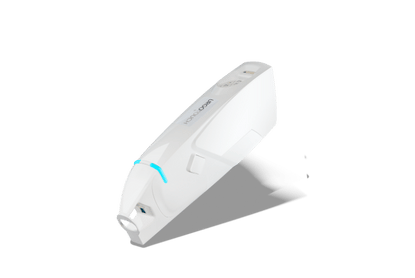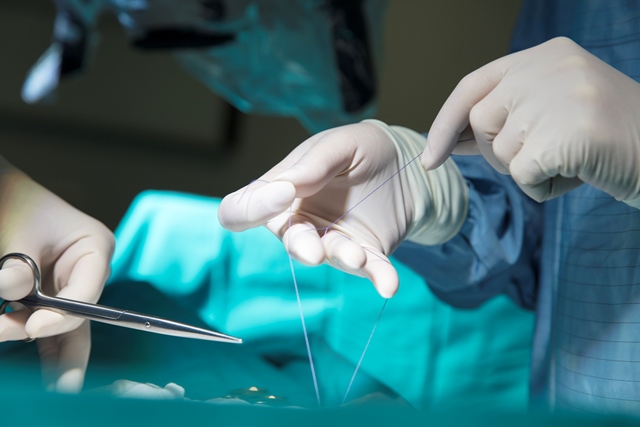What is a surgical wound?
There are two types of surgical wounds. They are easily identifiable and relate to the size of the incision and its location:
- Surgical wound closed by simple suture (primary intention healing). This is a wound which edges are closed in the operating theatre using suture, staples or skin adhesive. It stands out visibly by the absence of loss of substance (skin or flesh); it heals rapidly (epidermis reconstituted in 7 days / scar consolidated after one month / permanent scar in 12 or 18 months).
- Surgical wound with directed healing (secondary intention healing). This is a wound which comes with significant loss of cutaneous tissue and the edges of which cannot be brought together. The wound, left deliberately open, thus requires the appropriate care to help it to heal. In the event of a deep wound, a drain can also be placed to facilitate the evacuation of certain fluids (blood or pus especially).
Causes and complications
Whether it results from a minor operation or more major surgery, the surgical wound still represents rupture of the cutaneous layer. Post-operatively, certain situations may however halt the normal healing process, the stages of which are the same as for an acute wound.
Among the factors causing delayed surgical wound healing are:
- Wound-related factors (infection, lack of oxygen supply to the tissue, haematoma etc.)
- Factors related to the patient’s general condition (smoker, malnourished, stressed, diabetic etc.)
During the healing phase, it is necessary to closely monitor the closed surgical wound and to see a doctor or nurse in the following cases:
- If the scar bleeds
- If you develop a fever
- If the scar gives off an unpleasant smell
- If the scar is painful or hard to the touch after a week
Surgical wound treatment
Treatment of this type of wound consists of both minimising the risks of infection and rapidly achieving an aesthetically-acceptable scar. Wound care differs according to the type of wound.
- Wound closed by simple suture (primary intention healing). The wound is covered with a protective dressing and cleaned with soap and water or saline solution. The sutures or staples are removed after 5 to 15 days.
- Surtureless wound (secondary intention healing). After removing dead or denervated tissue, the nursing staff use dressings which promote healing in a moist wound environment. They are changed regularly, under optimal aseptic conditions.
And afterwards?
Some essential precautions must be taken for surgical wounds, especially healing time:
- A surgical wound should be covered with a water-resistant dressing in the shower
- A person should not undertake intense physical exercise in the days after surgery
- It should be ensured the person has a healthy lifestyle (no smoking, no drinking, and a healthy diet)
- The scar should not be exposed to the sun.
Aesthetic Surgeries with URGOTouch
Thanks to the wound care expertise it has developed over the decades, Urgo Medical has created URGOtouch, a laser technology which reduces the volume of aesthetic surgeries’ scars by up to 53%*. URGOtouch only requires one single application in the operating bloc and can be applied on all skin phototypes.
As of today, more than 30 000 patients across Europe have opted for this highly innovative device in order to optimized their scar’s aesthetic appearance.

*A 1 Year Follow-up of Post-operative Scars After the Use of a 1210nm Laser Assisted Skin Healing (LASH) Technology: A Randomized Controlled Trial. D.Casanova, ed. Aesthetic Plastic Surgery Journal. Feb 2017 – Reduction of 53% observed in a patient with dark phototype


